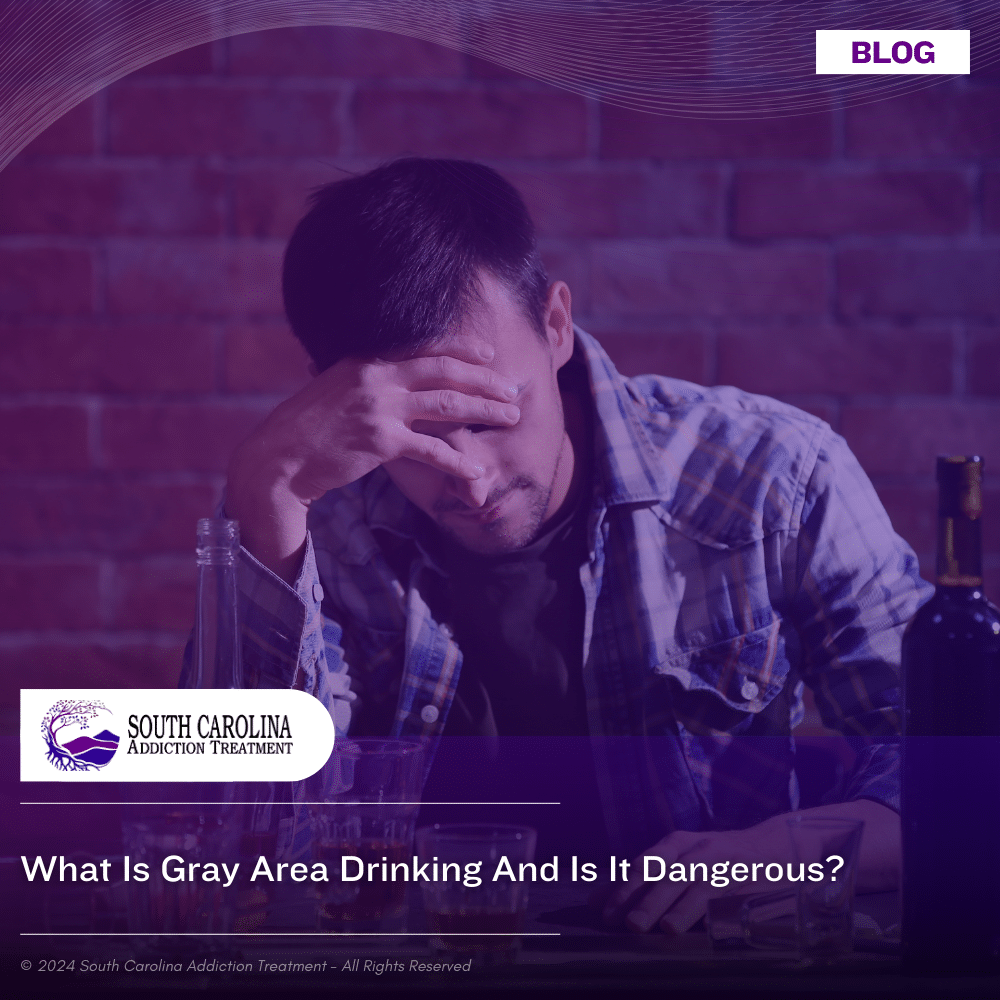What is Gray Area Drinking and is it Dangerous?

Medically Verified: 2/1/24
Medical Reviewer
Chief Editor

All of the information on this page has been reviewed and verified by a certified addiction professional.
Drinking has been a popular pastime in America for decades. However, since the pandemic began in 2019, drinking has become even more problematic in the United States. According to research completed by Harvard University, “excessive drinking (such as binge drinking) increased by 21 percent during the COVID-19 pandemic.”[1]
The COVID-19 pandemic created the perfect storm of stress and boredom, causing many Americans to pick up the bottle. While many individuals suffer from alcoholism and alcohol use disorder, there has been a rise in another form of problem drinking known as “gray area drinking”. The CDC reports that 90% of excessive drinkers do not have an alcohol use disorder, showing that these types of drinkers might be more common than people think.[2]
A gray area drinker can cut back on alcohol when they want to. Yet, these drinkers tend to consume excessive amounts of alcohol to cope with uncomfortable feelings. In other words, these individuals are on the brink of developing alcoholism.
What is Gray Area Drinking?
Gray area drinking is described as someone having a problematic relationship with alcohol but does not meet the criteria for an alcohol use disorder. People who are gray area drinkers may find themselves drinking in excess or drinking to cope with emotions and feelings. This means that someone who drinks large amounts of alcohol in one sitting, uses the substance to cope with stressors in their life, but can stop if they want to, is considered a gray area drinker.
When someone is a gray area drinker, they usually can continue using alcohol without facing the consequences of alcoholism. For example, while an alcoholic may lose their job or their friends and family due to their alcohol consumption, gray area drinkers can hide their problematic alcohol use under the guise of occasional fun.
Gray area drinking may not be severe alcoholism, however, it can lead to the development of an alcohol use disorder. Additionally, people who drink alcohol heavily consistently are still at risk of developing the health consequences of alcohol use. Because of this, gray area drinking is dangerous.
The Signs of Gray Area Drinking
While gray area drinkers tend to continue living their lives without facing the consequences of alcoholism, they can have a hard time controlling how much they drink after they start. This can cause their alcohol consumption to interfere with their quality of life and create risks to their health and safety. For example, someone who engages in binge drinking may experience lowered inhibitions, leading them to partake in risky behavior they otherwise would not have.
The symptoms and signs of gray area drinking include:
- Drinking at unplanned times and in situations where one wouldn’t normally drink, especially if this occurs regularly instead of occasionally.
- Regularly suffering from impaired work performance, impaired ability to care for family and children, and relationship issues due to drinking
- Worrying about how much one drinks
- Being preoccupied with drinking
- The individual can stop drinking and has for some time, but found it difficult
- The person’s drinking does not look problematic to those around them
- Refraining from drinking for a while and then jumping back in to “live a little”
Can Gray Area Drinking Lead to Alcoholism?
Gray area drinking is on the cusp of problematic drinking and a mild alcohol use disorder. With that being said, yes, this type of drinking can most definitely lead to alcoholism if left unchecked.
To understand how gray area drinking can lead to the development of an alcohol use disorder, it is important to understand what an alcohol use disorder is.
According to the Diagnostic and Statistical Manual of Mental Disorders – 5th Edition (DSM-V), individuals who display a combination of the following 11 symptoms have an alcohol use disorder:[3]
- Drinking more or longer than intended
- Wanting to moderate or quit drinking in the past but being unable to
- Spend a lot of time drinking and recovering from the effects of drinking
- Experiencing cravings or strong urges to drink alcohol
- Drinking alcohol begins to interfere with the home, family, work, or school
- Continuing to drink despite facing problems in one’s life
- Giving up obligations or activities that were once important to drink
- Getting into dangerous situations while drinking
- Continuing to drink despite facing physical or psychological health problems
- Having to drink more than previously to experience the same effect (tolerance)
- Experiencing withdrawal symptoms when the individual does not drink
Someone who is considered a gray area drinker may display some of the signs of alcoholism. For example, they tend to drink longer or more than intended, spend a lot of time recovering from the effects of alcohol, and may face problems in their life due to their alcohol consumption. With that being said, as the gray area drinker continues to drink in a problematic manner, their likelihood of developing more symptoms of alcohol use disorder increases.
Due to this, people who struggle with the gray area of drinking should seek help for alcohol abuse. Because gray area drinking can lead to the development of alcoholism, it is important to seek help sooner rather than later. It is easier to recover from gray area drinking than it is to recover from the effects of severe alcohol use disorder.
Finding Help for Alcohol Abuse and Alcoholism
If you or a loved one struggles with any form of alcohol abuse, professional alcoholism treatment can help. Whether you are a binge drinker, a gray area drinker, or suffer from full-blown alcoholism, attending rehab can help you learn how to live a life free of alcohol.
Contact South Carolina Addiction Treatment today for more information on our alcoholism treatment program.
References:

